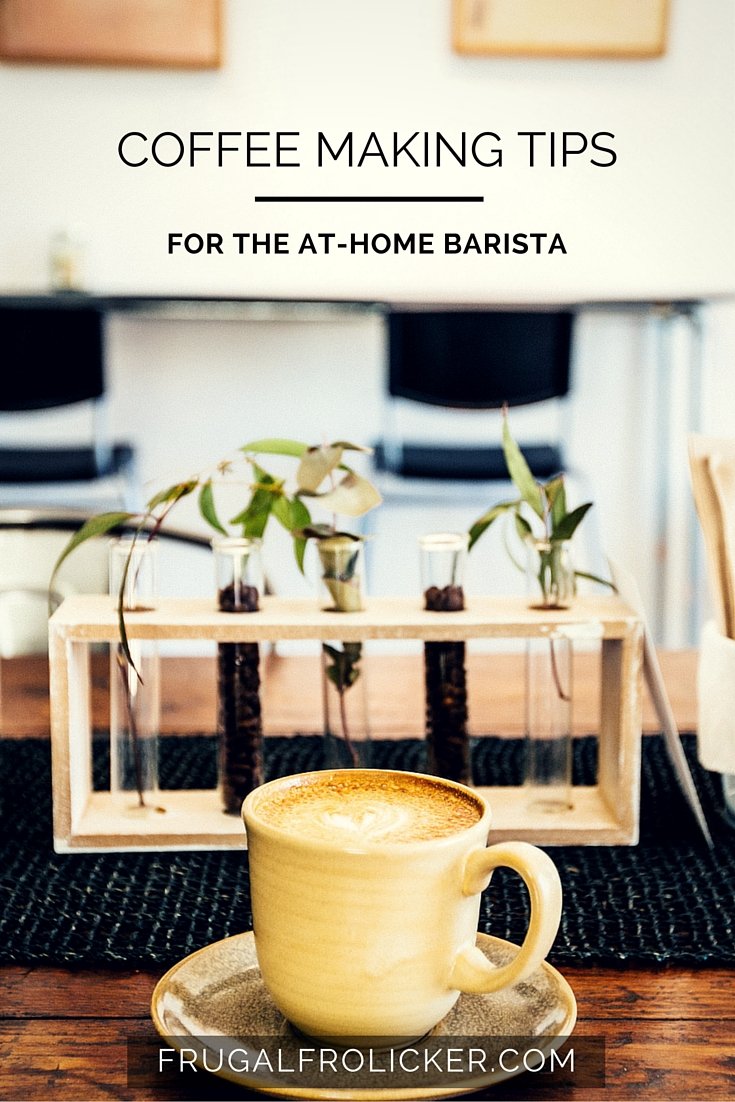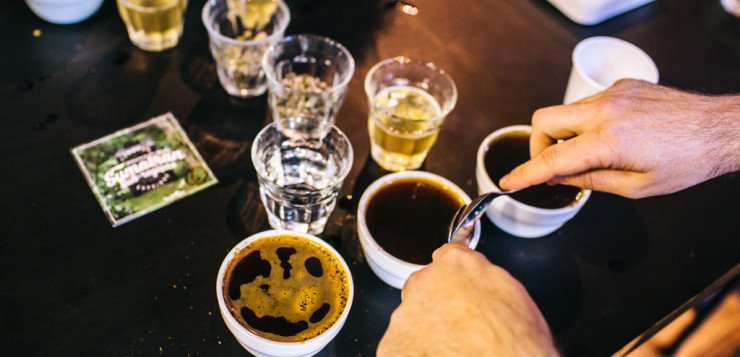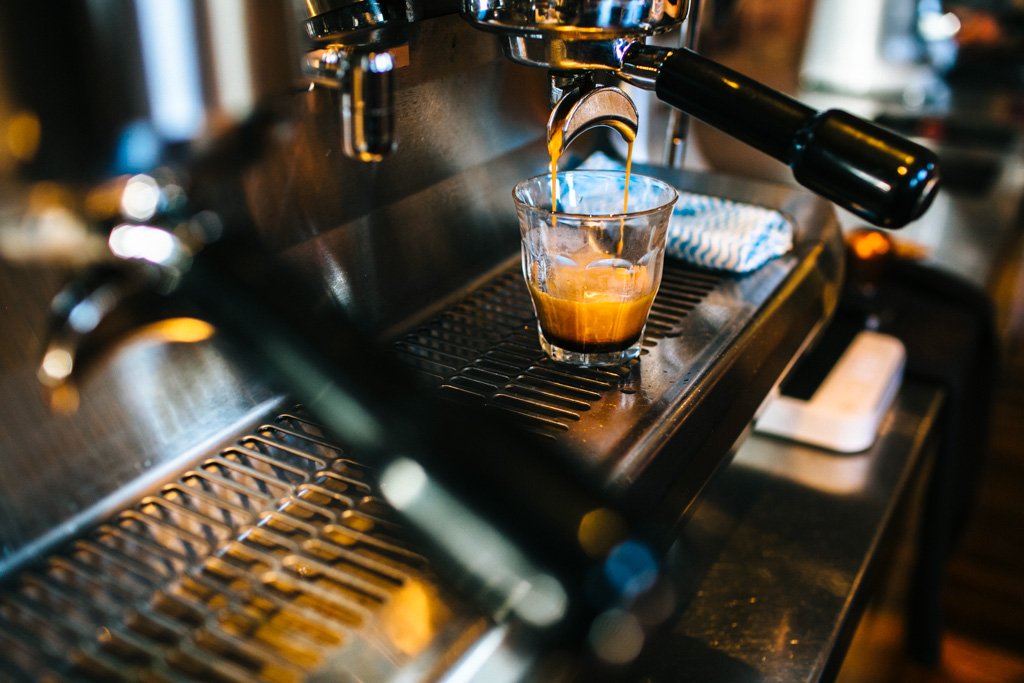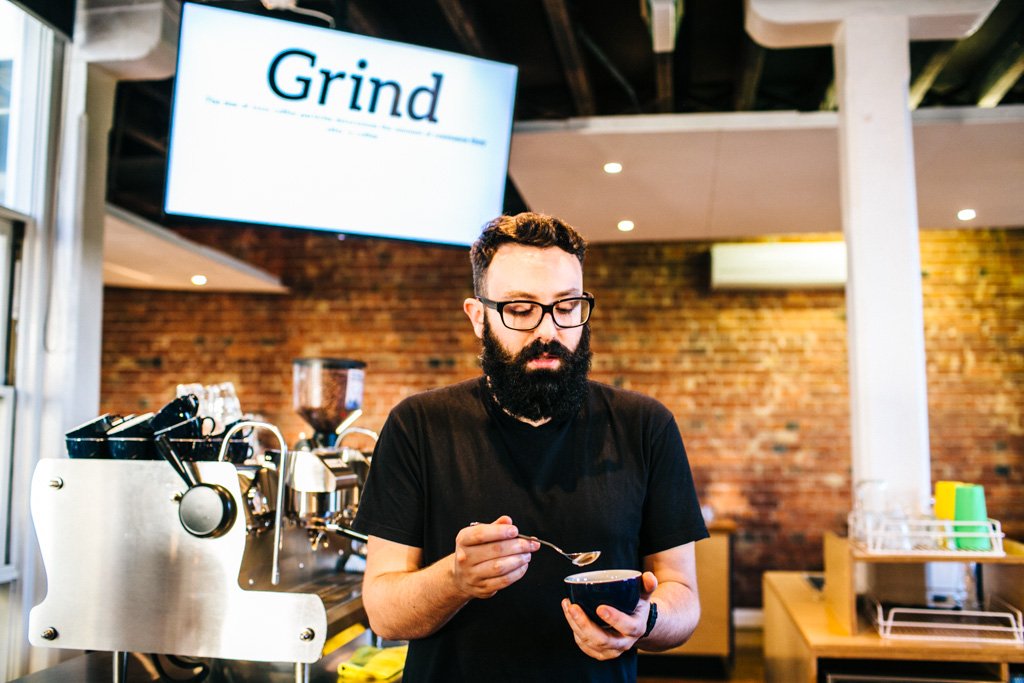This post was last updated on 2020 April 30
I spent a good chunk of November immersed in the coffee world: I become a regular at My Other Brother while living in Camberwell, tried out a few new Melbourne cafes (Monk Bodhi Dharma and Prospect Espresso were ace finds), and most exciting of all – I enrolled in a bunch of barista courses at the Australian Barista Academy (ABA).
Yep, turns out that the barista course I took here in October seriously whet my appetite for furthering my coffee making know-how. When the ABA offered to “fill my mind with all things coffee”, I enrolled in a bunch of their barista courses without a second’s hesitation. I’ve got plenty to say about the specific barista classes I attended and my ABA experience in general (spoiler alert: it was THE BEST), but I thought I’d start by sharing a few things I learned there that I think are interesting and/or practical to know if you’re an at home barista:
How To Distinguish Tastes On Your Palette
I’ve always claimed to have an unrefined palette. I’ve never known exactly why something tastes good or bad to me, just that it does.
The guys at ABA set me straight in their Sensory Skills class by teaching me how to distinguish between the main tastes we encounter while drinking coffee. Something sweet will linger on the tip of your tongue, while something bitter will linger on the back of your palette. And now, instead of waiting to see if I get heartburn to determine whether something tastes acidic, I’ll know it’s acidic if the taste lingers on the side edges of my tongue. Brilliant!
I can’t take credit for the cool latte art here, but I DID make the long black in the middle!
What’s The Deal With The Roast Date?
If you ever buy your own coffee beans, you’ve probably noticed the roast date stamped on your bag of beans. I always used to lament that the beans for sale were typically at least a week old – I mean, that’s a whole week less fresh than ideal, right?
Surprisingly, that’s not true. In my Workflow & Troubleshooting class, we learned that a roast age of 5-14 days is ideal for coffee beans. There’s a 3 week timeframe where the beans are usable: Week 2 is most preferable, as this is the time where you’ll get the best taste and consistency when you brew. Once you hit Day 20, you should pretty much get rid of your beans.
I can attest to the importance of that 5-14 day roast age. When I was working at El Questro in a very remote part of the country, I’d ordered a few bags of Toby’s Estate beans to be shipped to me there. It took ages for the package to get to me, and by the time it did, all of the beans were well past the 3-week mark. Towards the end, I was drinking coffee I’d brewed from beans that were roasted 2 months prior – and it tasted pretty terrible. Toby’s Estate beans are some of the best around and normally taste pretty freaking delicious, but after 3 weeks even the best beans seriously degrade in quality.
When To Grind Your Coffee Beans
Rule of thumb: Do not grind your coffee beans until you’re ready to make your coffee.
This I knew already. It’s why I’ve had my own grinder for years and use it hand-in-hand with my coffee maker (well, now my aeropress). But I didn’t know that coffee quality seriously degrades just 3 minutes after grinding. In my Fundamental Barista Skills course, we were urged to grind our beans just before making espresso and dispose of any leftover grinds that would go stale by the time we started on our next coffee drink.
People, don’t buy your coffee pre-ground! And also, don’t buy beans and then grind them in bulk to save yourself time when making your AM coffee. You’re losing most of the flavor and coffee goodness if you don’t grind your beans immediately before making your coffee.
Where To Store Your Coffee Beans
Ever been told that you should store your coffee beans in the fridge to keep them fresh? Well DON’T DO THIS! Between the fridge’s fluctuating temperatures and the moisture it creates, it’s a death sentence for even the finest coffee beans.
In general, aim to minimize exposure to moisture, heat, and air and store your coffee beans in an airtight container in a cool, dark place (such as a pantry or cabinet).
Massive thanks to the Australian Barista Academy for putting me through barista school. Note that all opinions expressed here and elsewhere on this blog are my unbiased own, and are uninfluenced by any gifts or incentives I may receive.









